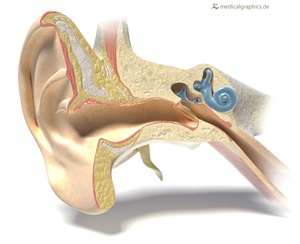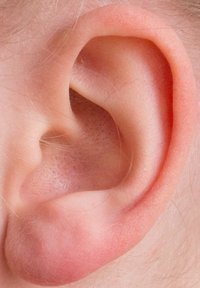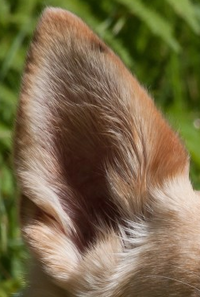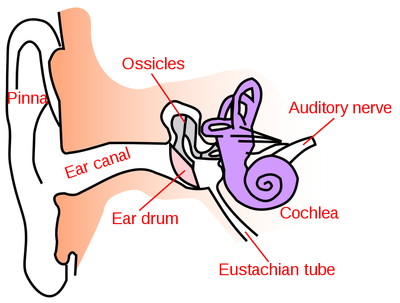Contents
Key Stage 1
Meaning
An ear is the part of the body we use to hear sound.
About Ears
- The ear lobe is the shaped part of an ear that we can see.
- You do not need an ear lobe to hear. Most of the important parts of the ear are deep inside the hole.
- If your ear does not work and you cannot hear, then you are deaf.
- Ears should not be cleaned with cotton bud as it can cause an 'ear infection'.
Examples
| The ear of a reptile. | A monkey's ear. |
| The ear on a dog. | An elephant's ear. |
Key Stage 2
Meaning
An ear is the part of the body we use to hear sound.
About Ears
- The ear lobe is the shaped part of an ear that we can see.
- You do not need an ear lobe to hear. Most of the important parts of the ear are deep inside the hole.
- If your ear does not work and you cannot hear, then you are deaf.
- Ears should not be cleaned with cotton bud as it can cause an 'ear infection'.
Examples
| The ear of a reptile. | A monkey's ear. |
| The ear on a dog. | An elephant's ear. |
Key Stage 3
Meaning

A cross section of a human ear.
The ear is a sensory organ that can detect sound.
About Ears
- Most animals have two ears.
- Ears can be damaged by listening to loud sounds too often.
- The ears of different animals can hear different sounds. Some animals can hear sounds too high pitched for us to hear and some can hear sounds too low pitched for us to hear.
There are several parts of the ear you should know:
- Pinna - The shaped cartilage collects the sound.
- Ear Canal - The tube leading to the ear drum.
- Ear Drum - This vibrates like a drum skin when sound hits it.
- Ossicles - Three tiny bones that pass the vibration to the cochlea.
- Cochlea - A spiral tube with a liquid inside it and tiny hairs attached to nerve cells.
- Eustachian Tube - A tube used to keep the pressure the same both sides of the ear drum to stop it bursting.
- Auditory Nerve - The nerve connecting the ear to the brain.
| A diagram of the ear. |
Key Stage 4
Meaning
The ear is a sensory organ that can detect sound.
About Ears
- Ears can only detect a certain range of frequencies of sound which depends on the size of the ear drum.
- Human ears can only detect frequencies of sound above 20Hz and below 20,000Hz. Sound below 20Hz is referred to as infrasound. Sound above 20,000Hz is referred to as ultrasound.
- Different animals can hear different frequencies of sounds. Some animals can hear infrasound and some can hear ultrasound.
There are several parts of the ear you should know:
- Pinna - The shaped cartilage acts to direct sound into the ear canal.
- Ear Canal - The tube leading to the ear drum.
- Ear Drum - This vibrates like a drum skin when sound hits it.
- Ossicles - Three tiny bones that pass the vibration to the cochlea.
- Cochlea - A spiral tube with a liquid inside it and tiny hairs attached to nerve cells.
- Eustachian Tube - A tube used to keep the pressure the same both sides of the ear drum to stop it bursting.
- Auditory Nerve - The nerve connecting the ear to the brain.
| A diagram of the ear. |
References
AQA
- Ear, page 191, GCSE Physics, Hodder, AQA
- Ears, hearing, page 183, GCSE Physics; Third Edition, Oxford University Press, AQA





